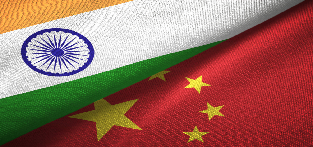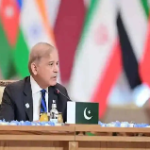Antara Ghosal Singh
A seemingly insignificant piece of news reported by Reuters on 24 June 2024 is creating waves in the Chinese internet. The report claims that an Indian battery maker, Amara Raja Energy and Mobility, has signed a licensing agreement with a unit of China-based Gotion High Tech Co to produce lithium-ion batteries in India.
Private media house South Asian Studies Newsletter, run by Mao Keji, a prominent South Asia researcher, associated with China’s National Development and Reform Commission reported the development as Chinese battery giant Gotion High-Tech “transferring lithium-ion battery technology to Indian companies”. This sparked heated discussions in the Chinese internet, where public opinion bitterly opposed the move. The development seemed to have touched a raw nerve among many in China on the grounds that 1) lithium batteries, one of China’s new three export pillars, are seen as typical representative of China’s industrial upgrading; thus, many want the government to strictly control the core technology and not let it get transferred to foreign countries, least of all to India; 2) the news of “technology transfer” has intensified concerns over “more industrial chains withdrawing from China”, under a perceived “US-Europe conspiracy against China”; 3) the Chinese strategic community has already been fuming over what is perceived as India’s particularly tough stance against Chinese investments in the past few years.
“I really can’t support Gotion High Tech’s transfer of lithium battery technology to India…it is understandable to transfer some relatively backward and generation-gap production capacity to foreign countries in order to achieve the goal of industrial upgradation and capturing new foreign markets. For example, TSMC has built a chip foundry production line in the mainland with a technological gap of at least two generations, which not only helped it make a lot of money from the Chinese market, but also suppressed the development of local enterprises in the mainland. But what Gotion High Tech is doing is aiding an adversary,” posted a popular Weibo account (with almost 3 million fans). Similar views were expressed by another Weibo user who argued, “Gotion High Tech’s transfer of lithium battery technology to India has far-reaching impacts. In the short term, the transfer of production capacity may help ease the competitive pressure on the relevant industry in China’s domestic market. However, in the long run, this will promote the rise of India’s lithium battery industry and may increase international competitive pressure. This is nothing but cultivating competitors…If technology needs to be transferred, it should be to friendly countries such as Malaysia and Thailand. Why transfer it to India?”. Meanwhile, many others lamented that “the Indian market has become too attractive, just like the Chinese market to Europe and the United States in the 1990s,” so that “certain Chinese companies do not mind exchanging critical technology for the market.”
An online outrage of such a scale was last seen when XCMG India, a Chinese heavy machinery manufacturer, celebrated its 2,000th excavator at its Indian factory and was trolled for “aiding the enemy” and “committing treason”. Interestingly, like last time, some pro-business voices once again came to the defence of the move. They contended that Chinese battery brands have a global market share of over 60 percent, and the country has already fully mastered various core technologies. It was argued that China need not “cry wolf” over regular technology licensing and transfer arrangements, otherwise, Chinese enterprises would not expand in the international market. As Chinese new energy enterprises strive to dodge severe domestic saturation and seek new growth points overseas, India, they pointed out, is the biggest prize to be won in the developing world. Its electric vehicle sales is expected to increase by 66 percent in 2024, and by 2030, electric vehicle sales will account for about 30 percent of India’s auto sales. The huge market will inevitably generate strong demand for power batteries. If Chinese manufacturers do not occupy the market now and make money from technology sharing, Japanese and Korean manufacturers such as Panasonic and LG will eventually do the same.
Such cooperation, they reassured, is unlikely to cause any major harm to China’s industrial security. “Can India build a complete industrial chain by getting a little technology transfer from Chinese manufacturers?”—those defending the development feels it cannot. The industry chain requires the support of multiple factors such as talent, technology, infrastructure, electricity, and industrial policies. It is difficult for India, under its present circumstances, to gather these factors in a short period of time. For instance, they point out, that Guoxuan High-tech had stablished a joint venture with the Tata Group as early as May 2019, which also included providing technical support to Indian partners. Five years later, India has not surpassed China in core power battery technology. Defenders of the move believe that China has little to worry about because “Made in India” batteries are unlikely to pose any substantial challenge to China’s leadership in the relevant industry. Instead, they argue, India becoming a major producer and consumer of electric vehicles is beneficial for China. This is because, at present, the trend of the global automobile industry’s transformation to new energy remains in flux. European and American markets that initially advocated for this industry are even showing signs of backing down. China is the “largest practitioner” in this space and has mastered various core technologies. If India also starts using electric vehicles in the future, it will surely provide a big push to the EV industry and will indirectly help China in outcompeting traditional car manufacturers in Europe, the United States, Japan and South Korea.
They admit that investing in India has its own risks, particularly the risk of on-site challenges like heightened government scrutiny, intervention etc. like those currently faced by Chinese mobile phone companies in India. However, in the face of a particularly adverse international environment, and rapid contraction of demand in its domestic market, Chinese enterprises have little option but to take greater risks and even make compromises in foreign markets, including in India—“If not, it will be another form of closing the country and not making any progress.”
India must take a closer look at China’s internal debates and discussions on the issue of China-India collaboration in strategic industries or the industries of the future, so that any possible cooperation in the future can be made truly win-win.



